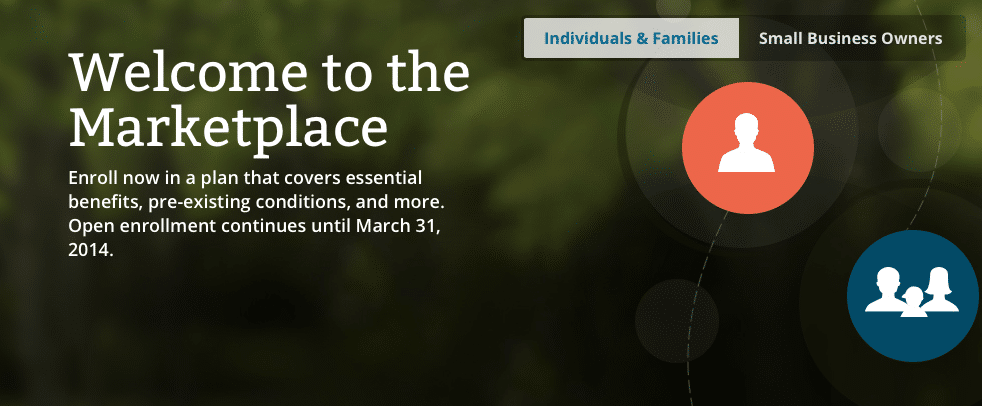President Obama is moving forward and continues to make his case for immigration reform. He renewed his call for congress to pass immigration reform this year.
Here’s a transcript of the President’s White House speech.
THE PRESIDENT: Thank you very much. Please have a seat, everybody. Good morning, and welcome to the White House. Today I’m here with leaders from business, from labor, from faith communities who are united around one goal — finishing the job of fixing a broken immigration system.
This is not just an idea whose time has come; this is an idea whose time has been around for years now. Leaders like all of you have worked together with Republicans and Democrats in this town in good faith for years to try to get this done. And this is the moment when we should be able to finally get the job done.
Now, it’s no secret that the American people haven’t seen much out of Washington that they like these days. The shutdown and the threat of the first default in more than 200 years inflicted real pain on our businesses and on families across the country. And it was a completely unnecessary, self-inflicted wound with real costs to real people, and it can never happen again.
Even with the shutdown over, and the threat of default eliminated, Democrats and Republicans still have some really big disagreements — there are some just fundamentally different views about how we should move forward on certain issues. On the other hand, as I said the day after the shutdown ended, that’s no reason that we shouldn’t be able to work together on the things that we do agree on.
We should be able to work together on a responsible budget that invests in the things that we need to grow our economy and create jobs even while we maintain fiscal discipline. We should be able to pass a farm bill that helps rural communities grow and protects vulnerable Americans in hard times.
And we should pass immigration reform. (Applause.) We should pass immigration reform. It’s good for our economy. It’s good for our national security. It’s good for our people. And we should do it this year.
Everybody knows that our current immigration system is broken. Across the political spectrum, people understand that. We’ve known it for years. It’s not smart to invite some of the brightest minds from around the world to study here and then not let them start businesses here — we send them back to their home countries to start businesses and create jobs and invent new products someplace else.
It’s not fair to businesses and middle-class families who play by the rules when we allow companies that are trying to undercut the rules work in the shadow economy, to hire folks at lower wages or no benefits, no overtime, so that somehow they get a competitive edge from breaking the rules. That doesn’t make sense.
It doesn’t make sense to have 11 million people who are in this country illegally without any incentive or any way for them to come out of the shadows, get right with the law, meet their responsibilities and permit their families then to move ahead. It’s not smart. It’s not fair. It doesn’t make sense. We have kicked this particular can down the road for too long.
Now, the good news is, this year the Senate has already passed an immigration reform bill by a wide, bipartisan majority that addressed all of these issues. It’s a bill that would continue to strengthen our borders. It would level the playing field by holding unscrupulous employers accountable if they knowingly hire undocumented workers.
It would modernize our legal immigration system, so that even as we train American workers for the jobs of the future, we’re also attracting highly-skilled entrepreneurs from beyond our borders to join with us to create jobs here in the United States.
It would make sure that everybody plays by the same rules by providing a pathway to earned citizenship for those who are here illegally — one that includes passing a background check, learning English, paying taxes, paying a penalty, getting in line behind everyone who is trying to come here the right way.
So it had all the component parts. It didn’t have everything that I wanted; it didn’t have everything that anybody wanted; but it addressed the core challenges of how we create a immigration system that is fair, that’s just, that is true to our traditions as a nation of laws and a nation of immigrants. And that’s passed the Senate by a bipartisan majority. (Applause.)
So here’s what we also know — that the bill would grow the economy and shrink our deficits. Independent economists have shown that if the Senate bill became law, over the next two decades our economy would grow by $1.4 trillion more than it would if we don’t pass the law. It would reduce our deficits by nearly a trillion dollars.
So this isn’t just the right thing to do; it’s the smart thing to do. Securing our borders; modernizing our legal immigration system; providing a pathway to earned, legalized citizenship; growing our economy; strengthening our middle class; reducing our deficits — that’s what common-sense immigration reform will do.
Now, obviously, just because something is smart and fair, and good for the economy and fiscally responsible and supported by business and labor — (laughter) — and the evangelical community and many Democrats and many Republicans, that does not mean that it will actually get done. (Laughter.) This is Washington, after all.
So everything tends to be viewed through a political prism and everybody has been looking at the politics of this. And I know that there are some folks in this town who are primed to think, “Well, if Obama is for it, then I’m against it.” But I’d remind everybody that my Republican predecessor was also for it when he proposed reforms like this almost a decade ago, and I joined with 23 Senate Republicans back then to support that reform. I’d remind you that this reform won more than a dozen Republican votes in the Senate in June.
I’m not running for office again. I just believe this is the right thing to do. (Applause.) I just believe this is the right thing to do. And I also believe that good policy is good politics in this instance. And if folks are really that consumed with the politics of fixing our broken immigration system, they should take a closer look at the polls because the American people support this. It’s not something they reject — they support it. Everybody wins here if we work together to get this done. In fact, if there’s a good reason not to pass this common-sense reform, I haven’t heard it.
So anyone still standing in the way of this bipartisan reform should at least have to explain why. A clear majority of the American people think it’s the right thing to do.
Now, how do we move forward? Democratic leaders have introduced a bill in the House that is similar to the bipartisan Senate bill. So now it’s up to Republicans in the House to decide whether reform becomes a reality or not.
I do know — and this is good news — that many of them agree that we need to fix our broken immigration system across these areas that we’ve just discussed. And what I’ve said to them, and I’ll repeat today, is if House Republicans have new and different, additional ideas for how we should move forward, then we want to hear them. I’ll be listening. I know that Democrats and Republicans in the Senate, those who voted for immigration reform already, are eager to hear those additional ideas. But what we can’t do is just sweep the problem under the rug one more time, leave it for somebody else to solve sometime in the future.
Rather than create problems, let’s prove to the American people that Washington can actually solve some problems. This reform comes as close to anything we’ve got to a law that will benefit everybody now and far into the future. So let’s see if we can get this done. And let’s see if we can get it done this year. (Applause.)
We’ve got the time to do it. Republicans in the House, including the Speaker, have said we should act. So let’s not wait. It doesn’t get easier to just put it off. Let’s do it now. Let’s not delay. Let’s get this done, and let’s do it in a bipartisan fashion.
To those of you who are here today, I want to just say one last thing and that is — thank you. I want to thank you for your persistence. I want to thank you for your activism. I want to thank you for your passion and your heart when it comes to this issue. And I want to tell you, you’ve got to keep it up. Keep putting the pressure on all of us to get this done. There are going to be moments — and there are always moments like this in big efforts at reform — where you meet resistance, and the press will declare something dead, it’s not going to happen, but that can be overcome.
And I have to say, Joe, as I look out at this room, these don’t look like people who are easily deterred. (Laughter.)
THE VICE PRESIDENT: I don’t think so.
THE PRESIDENT: They don’t look like folks who are going to give up. (Applause.) You look fired up to make the next push. And whether you’re a Republican or a Democrat or an independent, I want you to keep working, and I’m going to be right next to you, to make sure we get immigration reform done. It is time. Let’s go get it done.
Thank you very much, everybody. (Applause.)
![]() Why Boomers Continue to Play Sports
Why Boomers Continue to Play Sports![]() Medicare Advantage Rates Go Up in 2014
Medicare Advantage Rates Go Up in 2014










